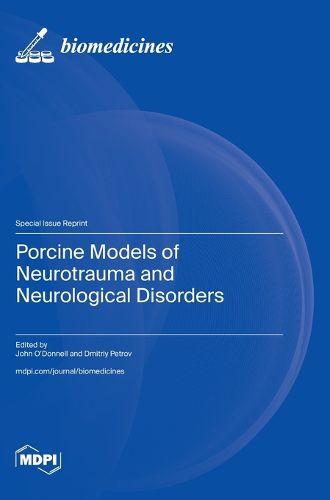Readings Newsletter
Become a Readings Member to make your shopping experience even easier.
Sign in or sign up for free!
You’re not far away from qualifying for FREE standard shipping within Australia
You’ve qualified for FREE standard shipping within Australia
The cart is loading…






This title is printed to order. This book may have been self-published. If so, we cannot guarantee the quality of the content. In the main most books will have gone through the editing process however some may not. We therefore suggest that you be aware of this before ordering this book. If in doubt check either the author or publisher’s details as we are unable to accept any returns unless they are faulty. Please contact us if you have any questions.
The translation of therapeutics from the lab to the clinic has a dismal record in the fields of neurotrauma and neurological disorders. This is due, in part, to the challenging heterogeneity of the clinical population common to all translational research, but it is also due to the unique challenges of recreating the mechanisms and manifestations of human neurological injury/disorders in small animals. Large animal models are an essential component of successful pipelines for moving discoveries from bench to bedside in other fields (e.g., exploring device or therapeutic scale-up and/or IND/IDE enabling studies), and neuroscience has made significant progress toward establishing such pipelines in its many unique subfields. Due to their size, gyrencephalic brains, high white matter content, and other factors, swine have proven to be ideal for providing high-fidelity, clinically relevant studies to bridge the gap between small animals and humans. Only by recognizing the strengths and limitations of our models can we hope to effectively develop, validate, and translate novel neuroprotective and regenerative therapeutics into clinical practice, in order to maximize functional recovery. Herein, we provide detailed descriptions of and findings from some of the sophisticated swine model systems that have been developed to empower translational research in neurotrauma and neurological disorders.
$9.00 standard shipping within Australia
FREE standard shipping within Australia for orders over $100.00
Express & International shipping calculated at checkout
This title is printed to order. This book may have been self-published. If so, we cannot guarantee the quality of the content. In the main most books will have gone through the editing process however some may not. We therefore suggest that you be aware of this before ordering this book. If in doubt check either the author or publisher’s details as we are unable to accept any returns unless they are faulty. Please contact us if you have any questions.
The translation of therapeutics from the lab to the clinic has a dismal record in the fields of neurotrauma and neurological disorders. This is due, in part, to the challenging heterogeneity of the clinical population common to all translational research, but it is also due to the unique challenges of recreating the mechanisms and manifestations of human neurological injury/disorders in small animals. Large animal models are an essential component of successful pipelines for moving discoveries from bench to bedside in other fields (e.g., exploring device or therapeutic scale-up and/or IND/IDE enabling studies), and neuroscience has made significant progress toward establishing such pipelines in its many unique subfields. Due to their size, gyrencephalic brains, high white matter content, and other factors, swine have proven to be ideal for providing high-fidelity, clinically relevant studies to bridge the gap between small animals and humans. Only by recognizing the strengths and limitations of our models can we hope to effectively develop, validate, and translate novel neuroprotective and regenerative therapeutics into clinical practice, in order to maximize functional recovery. Herein, we provide detailed descriptions of and findings from some of the sophisticated swine model systems that have been developed to empower translational research in neurotrauma and neurological disorders.